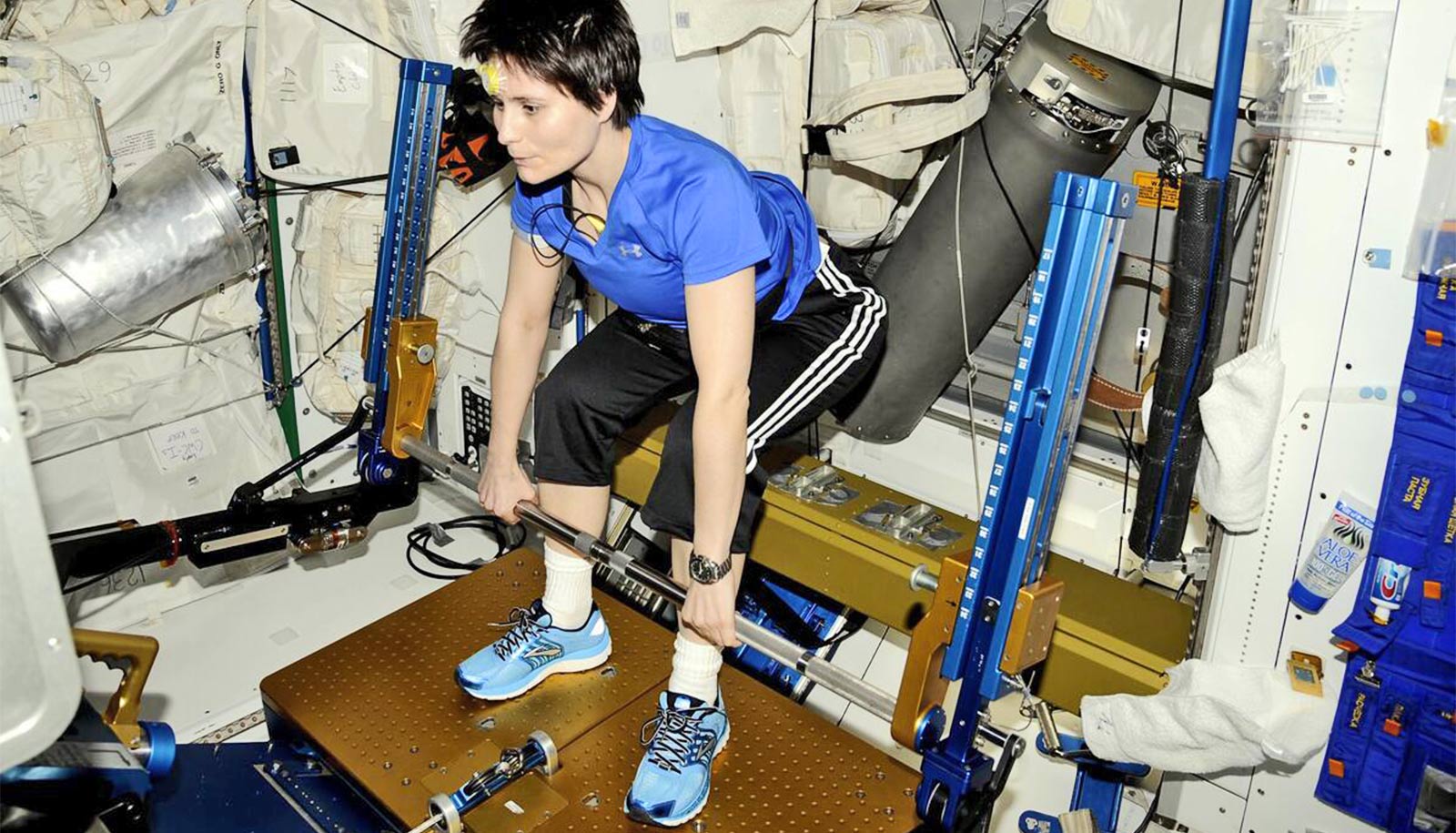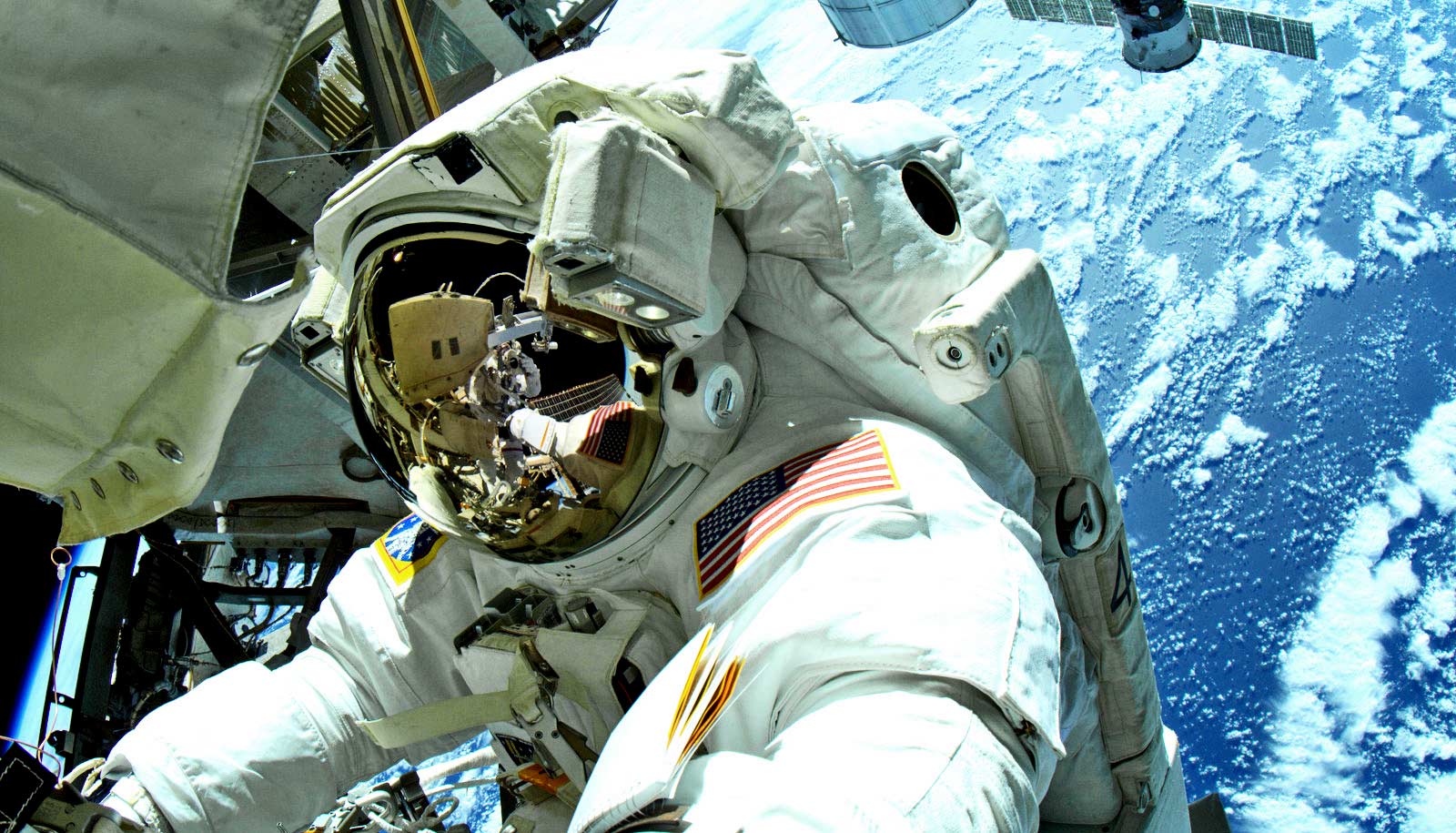Imagine you’re a jet fighter pilot being chased by a heat-seeking missile. You undertake evasive maneuvers, climbing and nose-diving, performing barrel rolls and loops, and sharply banking left and right. Your speed is around 1,500 miles per hour.
Without the proper training—even with it—you’re liable to get pretty nauseous. You’d grow disoriented and become unable to tell which direction you were headed. You couldn’t distinguish between up, down, left, or right. You wouldn’t know how to right the plane or steer yourself back on course.
If you want to know what this might be like—and not die—you could take a ride on the Multi-Axis Rotation and Tilt Device (MART). It moves much slower than an airplane, but for researchers at the Ashton Graybiel Spatial Orientation Laboratory at Brandeis University, it can still stand in for the experience of being inside a cockpit.
‘How do you know what’s up and down?’
For the roughly one dozen faculty members, staff, and graduate students at the lab, it’s a critical tool for understanding how humans adapt to changes in orientation.
“Even the people who get motion sick want to come back because it’s so fun.”
The Air Force funds research on the MART to understand how its pilots will respond to shifts in direction and gravity. NASA is interested in understanding what astronauts experience during spaceflight. The findings could also one day be used to develop treatment for vestibular diseases, disorders of the inner ear that make it difficult to balance.
“How do you know what’s up and down? How do you know when you’re moving? How do you know what direction you’re moving in?” says psychology professor Paul DiZio. “That’s what we’re studying.” DiZio and James Lackner, professor of physiology, co-direct the Ashton Graybiel lab.
“Even the people who get motion sick want to come back because it’s so fun,” DiZio says.
How MART works
Riders are strapped in with a five-point harness, blindfolded, and made to wear soundproof headphones. There’s a joystick on the right arm, an emergency stop button on the left. The chair can move side-to-side, tilt back and forth, and twist. In theory, it can move 360° in any of these directions, but in most experiments it goes no farther than 60° to one side or the other.
Astronauts offer science an extreme view of awe
The chair can move in two directions at once so sitting in it, you feel more like you are wobbling than going in a single straight direction. Using the joystick, you have to find the point where the chair would once again be balanced. It’s like you’re an egg searching for the spot where you won’t tip over.
About a decade ago, DiZio and Lackner came up with the idea of bolting the MART to the floor of a stripped-down DC-9 airplane, strapping in a passenger, and taking off. The plane flew in a parabolic path, rising to 35,000 feet before arcing downward and free-falling for 10,000 feet. Along the way, the chair periodically rotated to a new position. Every test subject went through 40 parabolas before the vehicle landed. People were extensively trained beforehand, but a good 50 percent of them still lost their lunch.
During the ride, the passengers were given a pencil-sized measuring device. As they rotated, they were asked to identify the direction an object placed on top of the stick would fall and then point the stick in that direction. They were also asked to align the device parallel to the midline of their body. This determined whether despite the twisting and turning, riders still knew which way was up and out from their bodies.
Pitch, roll, and yaw
Not surprisingly, a lot of them got it very wrong. But it was why they got it wrong that was most revealing for DiZio and Lackner. They were also working with Janna Kaplan, a senior research associate and lecturer, and Simone Bortolami, a former senior scientist at Brandeis now working at Draper Laboratory in Cambridge, Massachusetts.
The chair rotates along three axes—pitch, roll, and yaw. Roll tilts you leftward or rightward. Pitch throws you forward or backward. Yaw is going around the vertical axis that runs from your head to your feet. Think of a gyro turning around on a rotisserie.
When passengers in the MART on the DC-9 experienced changes in either roll or pitch, they became substantially disoriented. When they were put through changes in yaw though, it barely registered.
The finding helped confirm a radical new theory of how humans determine spatial orientation: Our bodies have an instinctual sense of pitch and roll, but we determine yaw indirectly, calculating it from the ratio of pitch to roll.
You can think of it this way:
Imagine yourself as a two-dimensional cut-out moving around on a piece of graph paper. It would be as if you could accurately ascertain how far you traveled along the vertical or horizontal axes, but not along the diagonal. To know the diagonal, you would need to compute it from the other two measurements.
It sounds strange, but the body is instinctively making a mathematical calculation when we figure out our spatial orientation. And though we experience ourselves moving through space in three dimensions, we are actually only attuned to two of them. Our experience of rotating around the yaw axis is an estimate our brains make so we feel at home in three dimensions.
The inner ear
The MART’s flying days are pretty much over and research now takes place entirely on campus with the whole structure firmly bolted to the ground. In recent years, Vivekanand Vimal, a PhD student at the Graybiel Lab, has carried out a set of experiments throwing new light on how our inner ear aids us in determining spatial orientation.
Hearing aids may lead to better balance
Inside the ear is what’s called the vestibular system. It has two components: the semicircular canals that detect angular acceleration during rotations and otoliths, small organs that sense linear acceleration.
It had been believed that people could make reasonable estimates about how far they were rotated just using their semicircular canals. But Vimal has shown that the canals work in combination with the otoliths. We need both actively working together to regain balance.
Vimal, DiZio, and Lackner’s research could be used by the Air Force to train pilots to anticipate when they are prone to make navigational mistakes. Traveling in outer space also puts enormous strains on the inner ear. These are critical situations where knowing when and how you might become disoriented is crucial. As Vimal says, “A small error can lead to huge consequences.”
Source: Brandeis University



